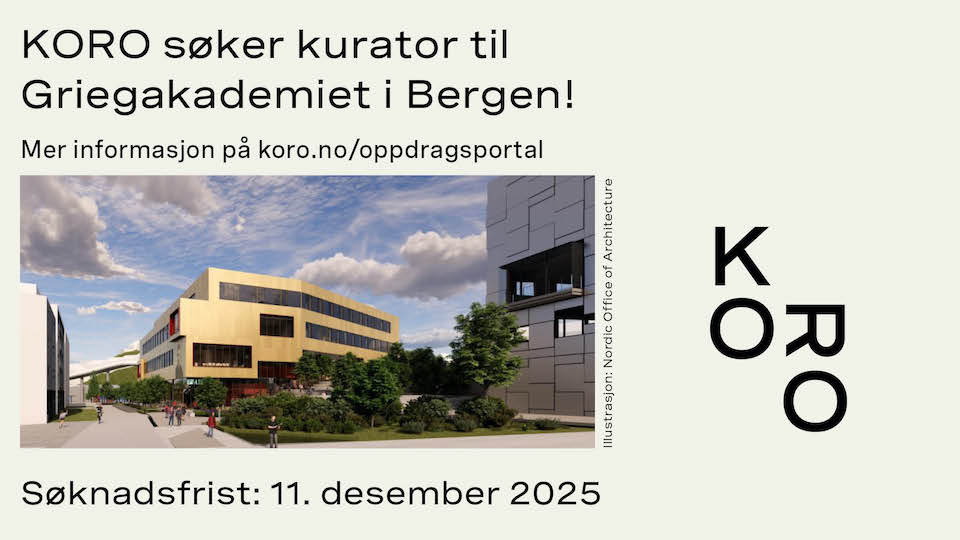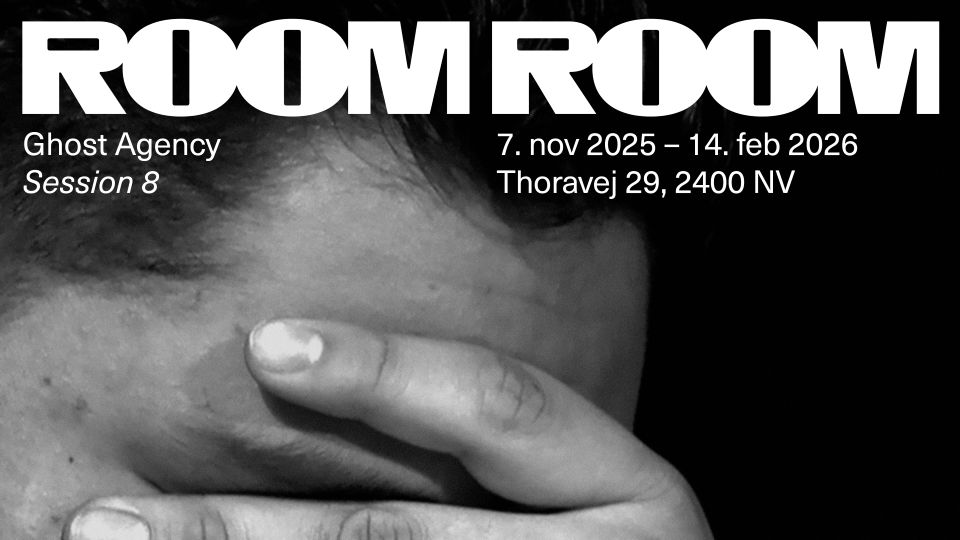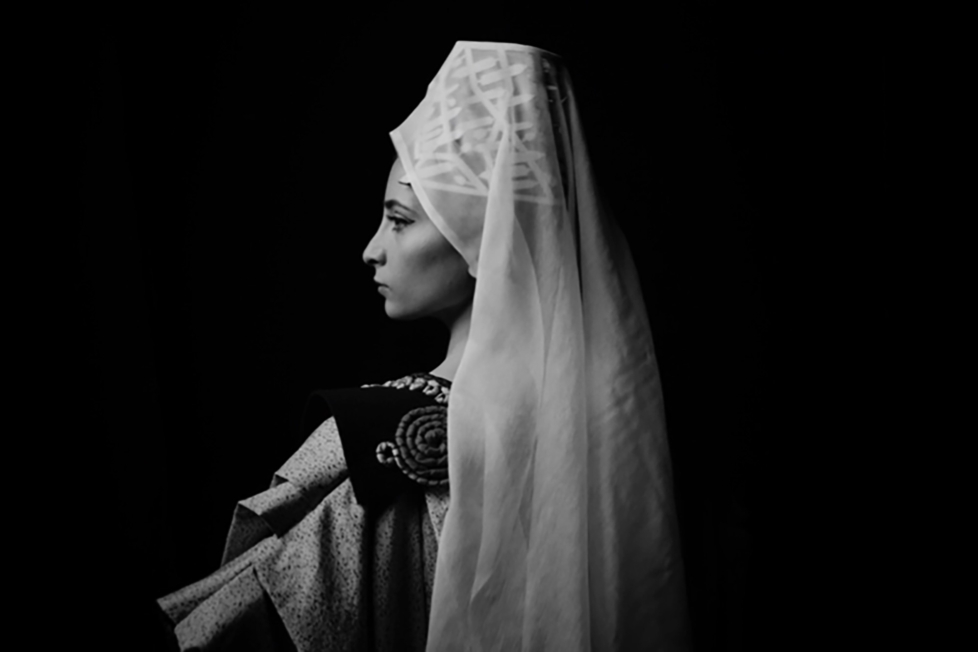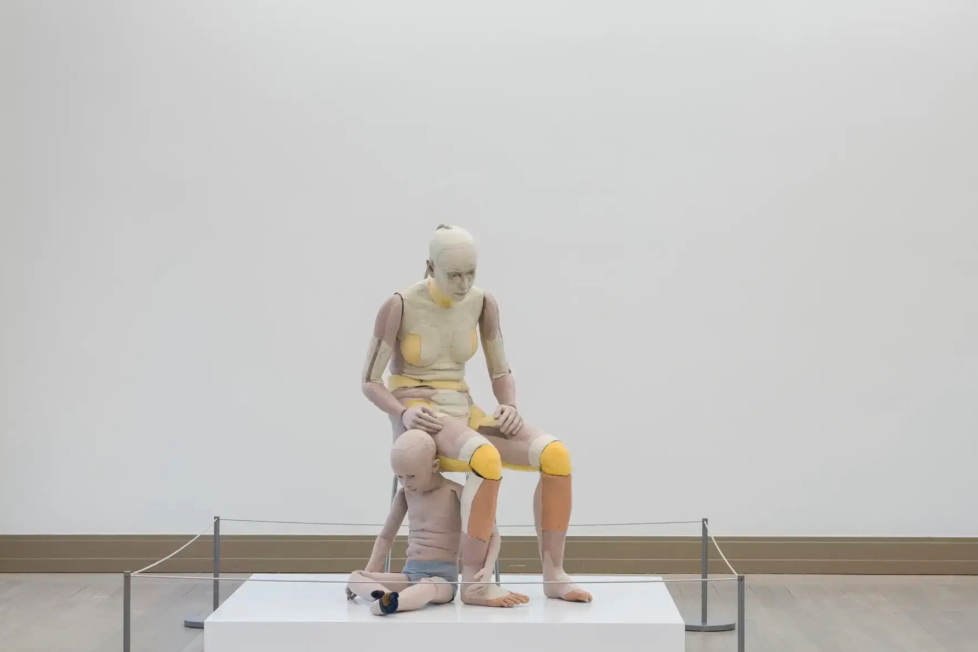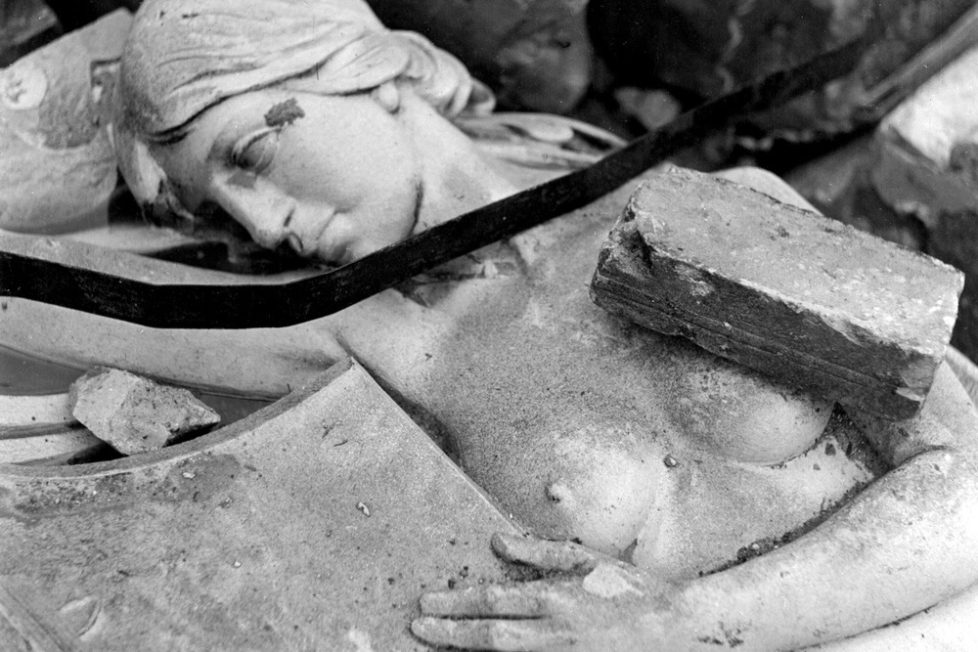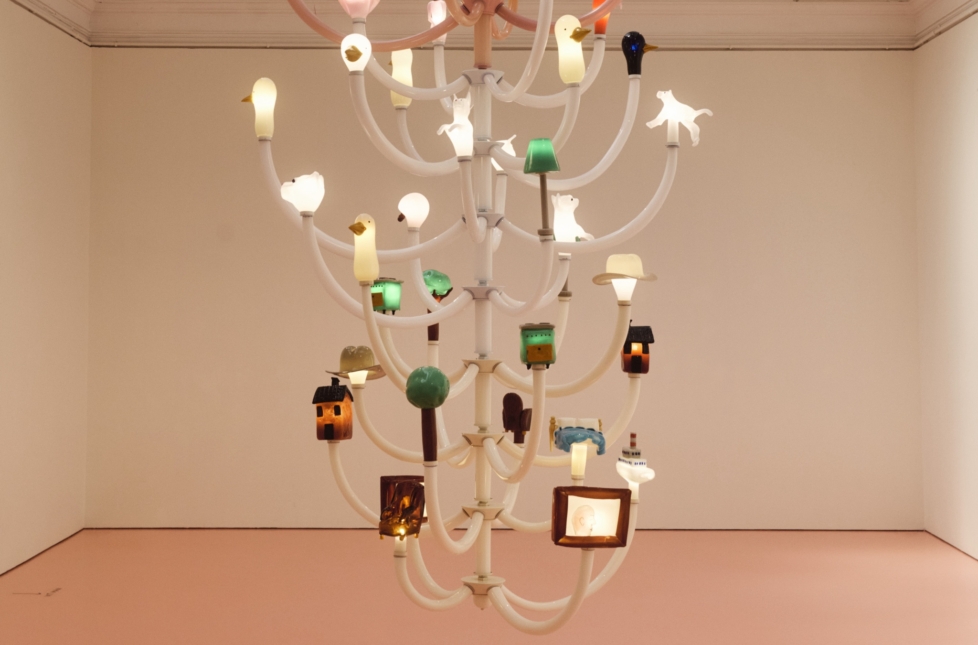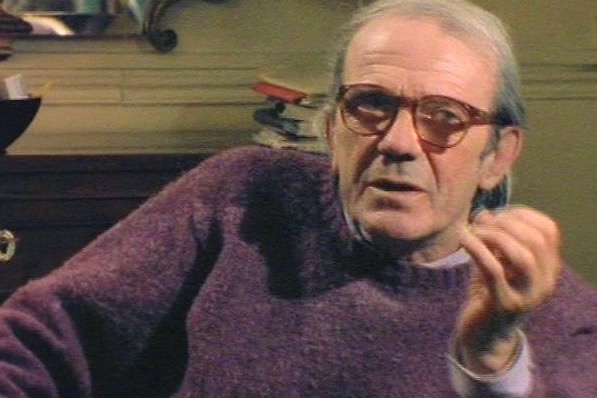
Welcome to Deleuze’s factory! Gilles Deleuze’s seminar lectures from the 1970s and 80s have at last begun to see the light of day, courtesy of publisher Les Éditions de Minuit. The first volume, Sur la peinture (On Painting) covering March to June 1981, opens a window to Deleuze’s working process: he asks about the origins of painting, using concepts, examples, and artists’ own experiences to create an largely unexplored theory of painting.
Deleuze starts off humbly. “I’d like to speak about painting. I am not sure that philosophy has anything to bring to painting.” The reservation is not irrelevant. To whom a conceptualisation of painting is directed remains an open question.To painters? Deleuze would say that they are the last to need a theory of painting. To critics and academics? Hardly. What we are dealing with is not an aesthetic of the spectator. Sur la peinture is a philosophical, that is to say conceptual, response to painting. Here Deleuze extends and develops his arguments from Francis Bacon, Logique de la sensation (Francis Bacon: The Logic of Sensation, 1981/2003), completed a few months earlier, to painting as a whole, with the help of Michelangelo, Cézanne, Klee, and Mondrian to name but a few.
Starting in 1970 at the experimental university in the Bois de Vincennes, which was opened after May 1968 in a concession to the rebellious students, Deleuze gave his Tuesday morning seminars in a small, crowded, and smoky hall. When the radical Vincennes was demolished in 1980 by order of Mayor Jacques Chirac, Deleuze continued in the new premises of Université Paris 8 in Saint-Denis until his retirement in 1987. Unlike Jacques Lacan, Michel Foucault, and Jacques Derrida, his lectures have so far remained unpublished since he opposed any form of posthumous publication and left no manuscripts. He taught from memory. As he explains in Claire Parnet’s interview film L’Abécédaire de Gilles Deleuze (Gilles Deleuze from A to Z 1996), you have to, as a teacher, prepare yourself enormously and rehearse your material like an actor until you know it by heart.
Luckily for us, a steady stream of students – referred to by Deleuze as “cassette keepers” – squeezed into the small hall and set up their microphones. So far, four hundred hours worth of Deleuze’s voice from 1980 to 1987 is available online and at the National Library of France. Much of it has been transcribed, translated into English and is available in unedited form on the internet (here, here, and here). Deleuze’s voice is alive. People here in Paris have told me countless times that they spent their teenage years watching Parnet’s iconic interviews, or that they listen to Deleuze’s seminars while jogging, walking the dog, or cooking.
The copyright holders and the editor of the seminar series, philosopher David Lapoujade, justify the new publication on the grounds that pirate editions are becoming a problem. However that may be, Lapoujade’s editorial work is rigorous and sensitive. While there is admittedly a pleasure in listening to Deleuze’s voice, it is helpful to have the material restructured, be spared the verbal oddities, and get a plentiful critical apparatus.

What drives Sur la peinture is a specific problem: how does a painting come into existence? Deleuze argues that painting begins in a double catastrophe. First is the “pre-pictorial”: abyss and chaos. “The painting is ruined before having been started. It’s shit.” But out of this abyss emerges a “germinal chaos,” a pictorial catastrophe that is introduced to the painting. The struggle against cliché and chaos is what distinguishes painting from the other art forms. Painting is a “deluge” that washes away what is on the canvas. To “think that the canvas is a blank surface […] is so stupid that it just makes you want to cry.”
At the heart of Deleuze’s workings, we can discern his idea of the sublime as a paradoxical ground in Kant’s aesthetics,but which he approaches from the perspective of the painter rather than the spectator. When we paint, we do so in a state of groundlessness where our measurements and perspectives are destroyed, and draw from “our own” specific problems and violent encounters.
To push past the clichés and create a painting, we establish a diagram. The diagram, like the related concept of the abstract machine from Mille plateaux (A Thousand Plateaus, 1980/1987), gives birth to something that, unlike an organism’s offspring, does not resemble itself at all. The diagram formed on the canvas in the wake of the catastrophe has the function of destroying all likenesses. The idea of figurative painting, Deleuze says without hesitation, is a delusion. “Everyone knows it, there has never been any figurative painting.” If any similitude remains, it is not at the level of the visible, but deeper. What exists are three dimensions in which the diagram operates to a greater or lesser extent.

Either the diagram takes over the whole picture, stretching out completely and organising the painting in a kind of “scramble” (this is the tendency of Expressionism), or it is reduced to a minimum, overwritten by a logical code that determines colour, fields, dots, and lines (the tendency of abstraction). Finally, there is the middle ground: the diagram is present, but through it emerges a “non-figurative Figure.” Since the painter creates a likeness with his hand – the diagram is manual – and with means that cannot transmit likeness, the Figure is painted by capturing the forces at the intersection. The viewer then sees these forces with their “third eye.”
Using the diagram, the painter “modulates” colour, light, and lines. Much of Sur la peinture is a kind of history that jumps between eras, painters, working methods, and styles, from “Egyptian space” to Pollock’s “line with no contours,” Goethe’s colour theory, Byzantine paintings, and Gérard Fromanger’s use of banal photographs as source material. But there are also almost lyrical passages where Deleuze writes about what colour is: how it is born out of the grey and how it emerges – or doesn’t, for disaster is always near – out of the burning furnace that is pre-pictorial chaos.

Deleuze thus rejects the idea of figurative painting as the origin and Expressionism and abstraction as late arrivals. The three forms merely respond to different problems. In an unusual passage for Deleuze, he puts forward a kind of ethics of painting. “Why paint today?” Our modern world, he says, is in a state of “chaos and tumult.” But painting, with its special relationship to chaos and catastrophe, can not only conjure chaos, but also draw from it “a possible modern order.” It can teach us about “modern man’s third eye,” which sees forces beyond the obvious. But painting is also a way to “measure chaos,” to live with it and draw from it “a code for the future.”
The next time I see a painting exhibition, I will in no way understand more clearly what I see in the paintings, but having read Sur la peinture provides me with a set of concepts to approach how they have come about and what was at stake in the making of the paintings. To focus so intently on that process, as Deleuze does, shifts my perception from the subject matter to that which supports it. If it is true, as he writes, that becoming “illustrative or narrative” are some of painting’s greatest threats, then Sur la peinture is a healthy antidote with its almost mystical celebration of the power of painting and ethical call to learn to see what lies beyond the obvious.
When Sur la peinture was published in early October, it was met with a full front page and two spreads in the newspaper Libération. Le Monde quickly followed with a full page, and Radio France devoted several programmes to it. France still celebrates its intellectual heroes through whom the present is thought. To gain insight into how Deleuze brings together paintings and concepts, associating and expropriating from the right and left to fabricate his concepts is to peek into the secret factory of this thinking.



